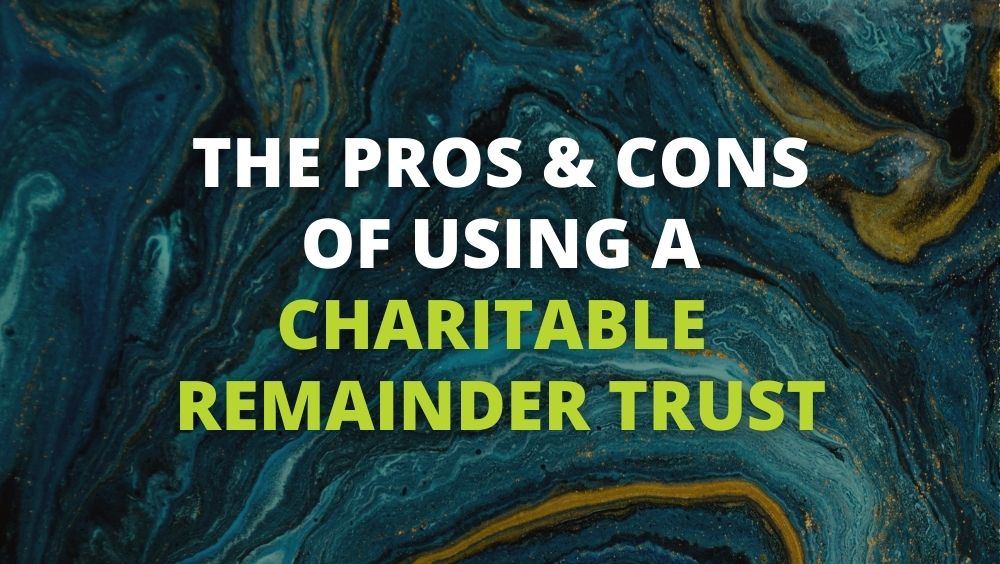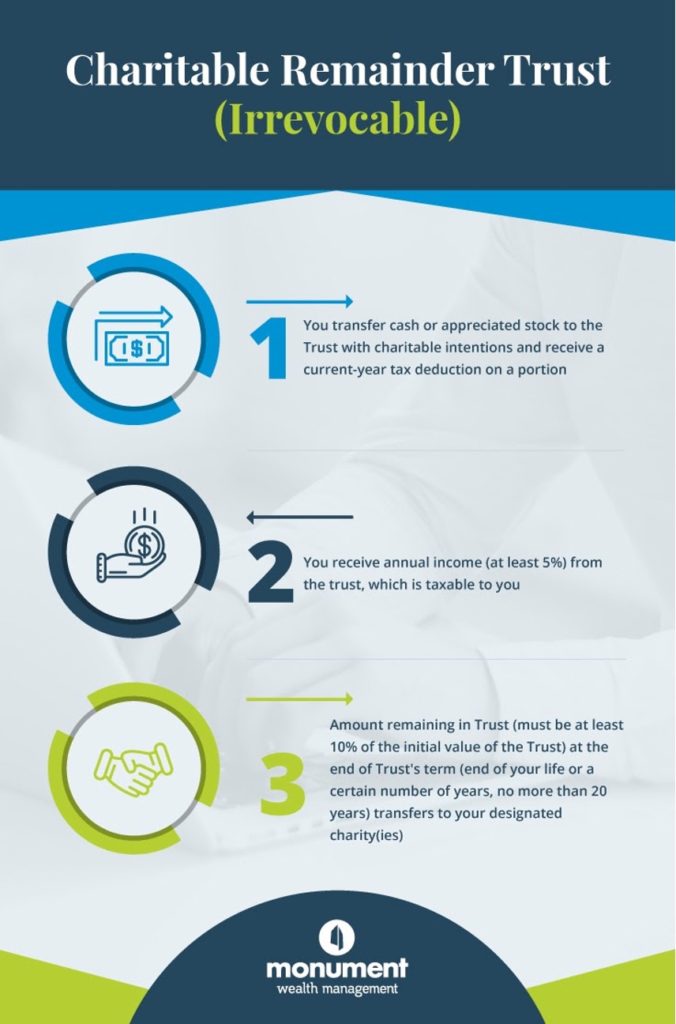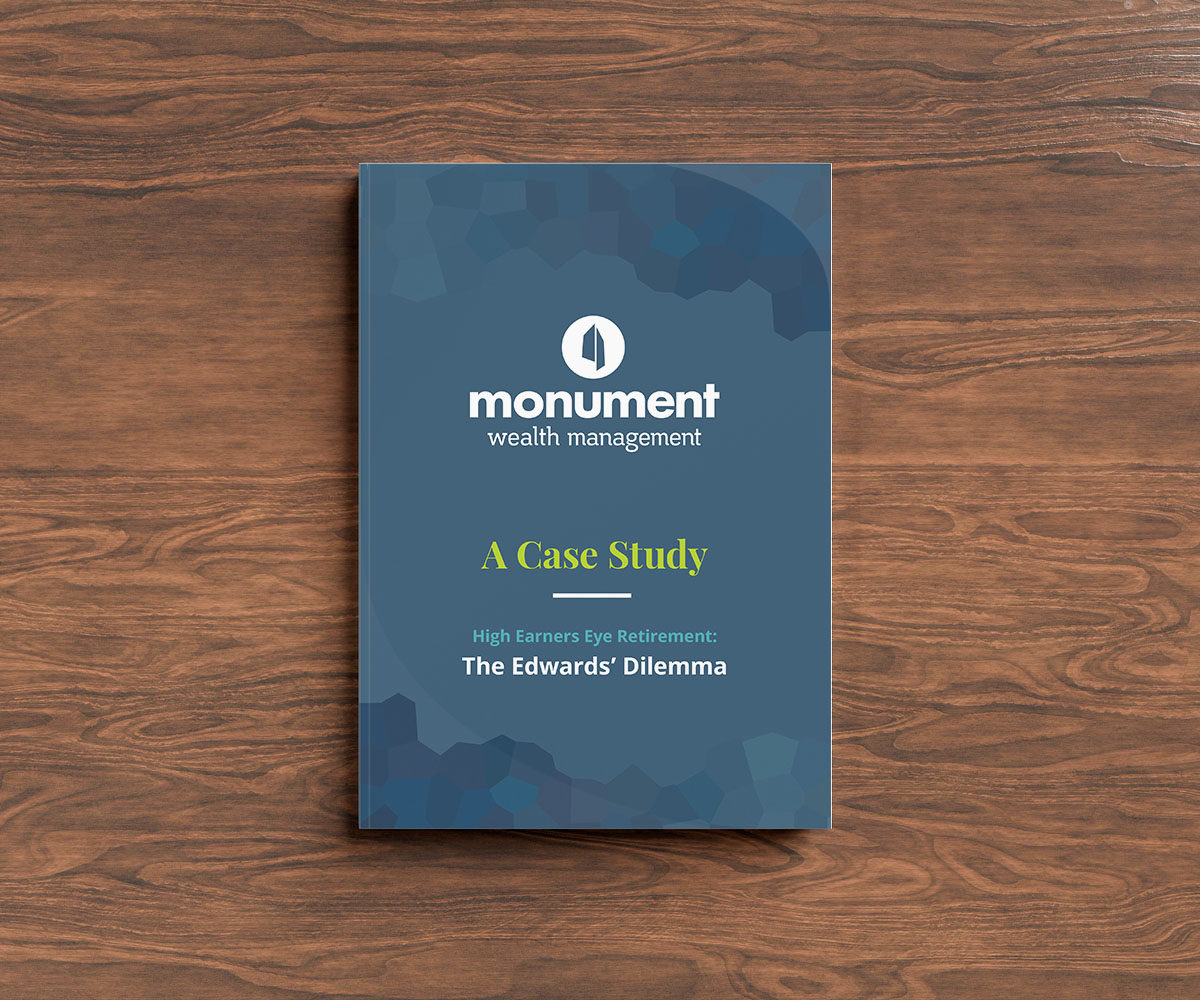Monument Wealth Management Articles
What is a Charitable Remainder Trust? Here’s Everything You Need to Know.

Share on your favorite platform, or by email
When you’ve grown significant wealth over the years and you want to use it to make a positive impact on the world, there are much more effective ways to do that than simple “checkbook giving” to your favorite charities. Each method of charitable giving has its own benefits and setbacks, rules and regulations, so it’s important you see all your options and understand why it’s worth considering one over another.
A Charitable Remainder Trust (CRT) is one of the many ways to give to charity, so let’s take a look at what they are, how they work, and the pros and cons of using a CRT to fulfill your charitable goals.
How Does a Charitable Remainder Trust Work?
Like many financial concepts, CRTs may seem complicated. Hands-on management of a CRT can be complex, but understanding the basic principles behind these trusts doesn’t have to be!
A CRT is a “split-interest” giving vehicle–that is to say, they can help both charitably-inclined individuals meet their personal wealth goals and the charitable organizations they choose to support. When you set up a CRT, it will distribute income to you as the grantor of the trust for a predetermined period. Then, the funds left in the trust at the end of the term will go to a chosen charity.
A CRT can provide current tax benefits in the form of a tax deduction, an income stream to support your needs if you still need to rely on the assets being donated, and fewer assets in your estate potentially subject to estate taxes after you pass away. It’s important to remember that CRTs are irrevocable trusts. That means that when you put money into a CRT, you won’t be able to take it out with the exception of the income stream that is paid out to you.
When setting up a CRT, you will need to choose how long you will receive an income stream. This term can last the length of your life or a certain number of years, not to exceed 20 years. Since you’ll need to have a 5% or lower chance of outliving your trust’s assets in order to receive a charitable deduction, it’s safe to say CRTs aren’t ideal charitable giving vehicles for middle-aged or younger people.
Take a look at this diagram for a more detailed look at how CRTs work:

CRATs vs. CRUTs: Know the Difference
Hopefully you understand the CRT basics–or at least have a better grasp on the concept than you did before. So let’s go a little deeper.
There are two primary types of CRTs:
- Charitable remainder annuity trusts (CRATs)
- Charitable remainder unitrusts (CRUTs)
Though their names and acronyms can sound confusingly similar, these types of CRTs have some critical differences. With a CRAT, you’ll receive a fixed dollar amount of income annually (an annuity) –anywhere from 5% to 50% of the initial fair market value (FMV) for the assets transferred into the trust. You can’t transfer more assets to a CRAT after you’ve established it, making it less flexible than a CRUT.
A CRUT will give you a fixed-percentage payout equivalent to 5%-50% percent of the assets in the trust year to year. Unlike CRAT payouts, these payouts are based on the annual FMV of the assets in the trust, which means you’ll need to value the assets each year. If you have illiquid or non-traded assets in your CRUT, paying for an annual valuation could become costly. CRUTs are better for maximizing the amount of income you receive each year, particularly if you expect your investments to appreciate; they’re also more flexible since you can make additional contributions to these trusts after they’ve been established.
Charitable Remainder Trust Final Distribution to Charity
No matter which type of CRT you pick, the assets you put in it will eventually go to charity at the end of the trust’s term. To make sure your trust works just as it should, you’ll need the help of a team of qualified professionals which will likely include a trust and estate attorney, an accountant, and your wealth advisor. This team will help you navigate and follow complex rules set by the IRS to a tee–including the charitable remainder trust 10 percent rule.
Both CRUTs and CRATs must have a minimum remainder interest of 10% that transfers to charity. For CRATs, this should be 10% or more of your initial (and only) contribution to the trust. For CRUTs, this should be 10% or more of all contributions you made to the trust (if you made more than one contribution). If you don’t meet the 10% remainder requirement, you will need to reduce the income you receive from the trust (but remember the 5% minimum distribution requirement!) and/or reduce the length of the trust’s term. Bottom line: it’s critical that you meet this 10% requirement–working from the start with the qualified team of advisors we mentioned previously when setting up a CRT can help you avoid a lot of stress.
What if you have a change of heart when it comes to the organizations that ultimately receive your assets? Not to worry – you can reserve the right to change your trust’s charitable beneficiary. And while you don’t need to let your charity of choice know about your CRT, it’s often a good idea to do so. That way, you can ensure that your eventual donation will go toward your project or program of choice!
Charitable Remainder Trust Income Tax Deduction
So how do you get a tax deduction for transferring assets to a CRT? Because you are ultimately donating the remaining assets to charity, you can take a charitable deduction (assuming you itemize) in the year that you fund the trust based on what is expected to remain at the end of the trust’s term. To determine the amount you may deduct, you will need to subtract the present value of the income stream from the total value of the property transferred to the trust – you can’t get a deduction for paying yourself! Present value calculations can be tricky.
For CRATs, the IRS Section 7520 rate and your age at the date of transfer will determine the present value of your income interest in the trust. Generally, when interest rates are high, you will benefit from a larger charitable deduction because it is assumed the present value of your income interest is low relative to what remains for charity.
Determining the tax deduction for a CRUT is not as straightforward since you won’t receive a fixed amount annually from the trust. Additionally, you likely will not receive as high a deduction as you would with a CRAT due to the flexibility a CRUT allows. Regardless of whether you use a CRAT or a CRUT, an accountant should weigh in on the amount of deduction you are allowed to take when funding the trust.
Pros and Cons of Charitable Remainder Trusts
Based on what you’ve read so far, it should be clear that CRTs can be a great tool if you’re looking for both income for yourself and a benefit for charity. Of course, that doesn’t necessarily mean they’re the ideal charitable giving vehicle for you.
Looking for a low-cost option? Then CRTs probably aren’t for you. (You’ll incur legal fees to set up the trust, annual administration fees to make sure the trust is administered properly, and annual accountant fees to file the trust’s tax return.)
And if you’re likely to outlive the 20-year maximum term for a CRT, then this option won’t work for you either.
But if you haven’t turned away yet, keep reading to narrow in on the specific pros and cons of CRATs and CRUTs, and which type of CRT may work for you.
CRAT Pros and Cons
CRATs have a more reliable income. That’s because you receive a fixed income stream–a known dollar amount each year that doesn’t change, which can help you plan your cash flow. Even if your account balance declines, your income amount won’t change.
On the flip side, that fixed dollar amount means that you won’t have protection from inflation and rising expenses. And because you need to meet the 5% probability test (reminder: you must have a 5% or less chance of outliving the trust assets), you may be more limited than you’d like on how much income you can take.
Remember, you can only contribute to a CRAT once, so it requires careful planning from the start of how much to contribute to the CRAT and what your income amount will be.
CRUT Pros and Cons
Unlike CRATs, CRUTs allow you to make multiple contributions, so if you want to test out adding some money to a CRUT and see how it goes, you can add more later on if you want. . Since your income distributions are a percentage of the trust assets each year (rather than a fixed amount), the dollar amount you receive annually can increase over time if the assets in the CRUT grow.
However, CRUTs come with the risk of principal erosion–since you’re taking out a varying amount of money every year, it’s possible you may cut down your principal and not be able to meet the CRT requirement to leave 10% to charity. And, depending on the type of assets in your CRUT, the annual valuation requirement for CRUTs can be pricey.
Is a CRT Right for You?
Though the concept of “take some money now, then leave the rest to charity” is straightforward enough, correctly setting up and managing a CRAT or CRUT quickly gets complicated.
Putting aside the legal and tax and admin for a minute… before you even think about establishing a CRT, you need to answer one critical question: can I afford to irrevocably give away money to a CRT and still accomplish my other goals?
Don’t know the answer? The good news is you don’t need to figure it out on your own. Our team at Monument Wealth Management can leverage our Private Wealth Design process to create a custom plan that can help you meet your financial goals–both personal and charitable.
With Monument, you’ll get financial advice that’s easy to understand and even easier to act on. This includes evaluating if a CRT is the best charitable giving vehicle for your goals, and if yes, how much you can afford to contribute to a CRT. And if a CRT isn’t right for you, we’ll help guide you to the right charitable giving structure with straightforward, transparent advice.

Find clarity around your finances and remove the anxiety of the unknown.
Read our case study, “High Earners Eye Retirement,” to see how we helped one of our clients plan for the long term.
Ready for straightforward, unfiltered
opinion and tailored advice for YOUR questions, not everyone else’s?
IMPORTANT DISCLOSURE INFORMATION
Please remember that past performance is no guarantee of future results. Different types of investments involve varying degrees of risk, and there can be no assurance that the future performance of any specific investment, investment strategy, or product (including the investments and/or investment strategies recommended or undertaken by Monument Capital Management, LLC [“Monument”]), or any non-investment related content, made reference to directly or indirectly in this blog will be profitable, equal any corresponding indicated historical performance level(s), be suitable for your portfolio or individual situation, or prove successful. Due to various factors, including changing market conditions and/or applicable laws, the content may no longer be reflective of current opinions or positions. Moreover, you should not assume that any discussion or information contained in this blog serves as the receipt of, or as a substitute for, personalized investment advice from Monument. To the extent that a reader has any questions regarding the applicability of any specific issue discussed above to his/her individual situation, he/she is encouraged to consult with the professional advisor of his/her choosing. No amount of prior experience or success should be construed that a certain level of results or satisfaction will be achieved if Monument is engaged, or continues to be engaged, to provide investment advisory services. Monument is neither a law firm nor a certified public accounting firm and no portion of the blog content should be construed as legal or accounting advice.
A copy of Monument’s current written disclosure Brochure discussing our advisory services and fees is available for review upon request or at www.monumentwealthmanagement.com/disclosures. Please Note: Monument does not make any representations or warranties as to the accuracy, timeliness, suitability, completeness, or relevance of any information prepared by any unaffiliated third party, whether linked to Monument’s website or blog or incorporated herein, and takes no responsibility for any such content. All such information is provided solely for convenience purposes only and all users thereof should be guided accordingly.
Historical performance results for investment indices, benchmarks, and/or categories have been provided for general informational/comparison purposes only, and generally do not reflect the deduction of transaction and/or custodial charges, the deduction of an investment management fee, nor the impact of taxes, the incurrence of which would have the effect of decreasing historical performance results. It should not be assumed that your Monument account holdings correspond directly to any comparative indices or categories. Please Also Note: (1) performance results do not reflect the impact of taxes; (2) comparative benchmarks/indices may be more or less volatile than your Monument accounts; and, (3) a description of each comparative benchmark/index is available upon request.
Please Remember: If you are a Monument client, please contact Monument, in writing, if there are any changes in your personal/financial situation or investment objectives for the purpose of reviewing/evaluating/revising our previous recommendations and/or services, or if you would like to impose, add, or to modify any reasonable restrictions to our investment advisory services. Unless, and until, you notify us, in writing, to the contrary, we shall continue to provide services as we do currently. Please Also Remember to advise us if you have not been receiving account statements (at least quarterly) from the account custodian.
